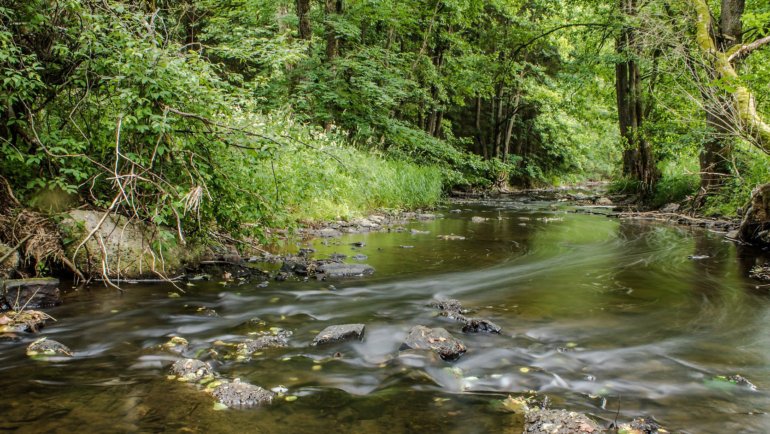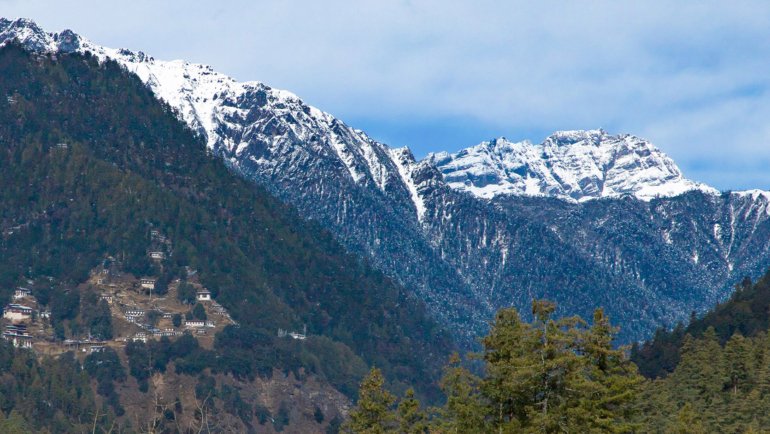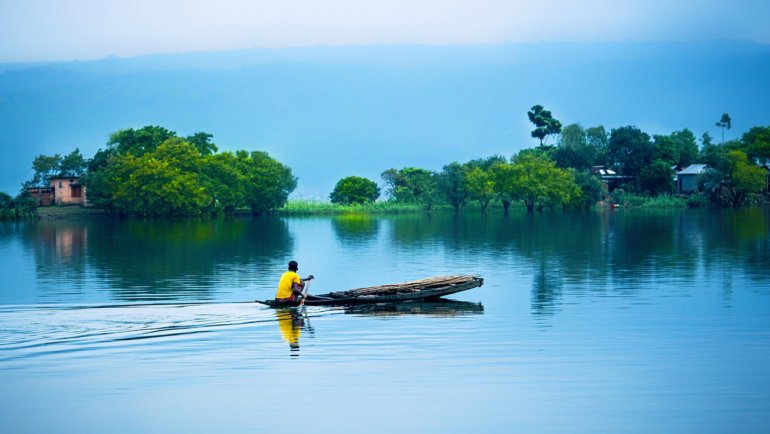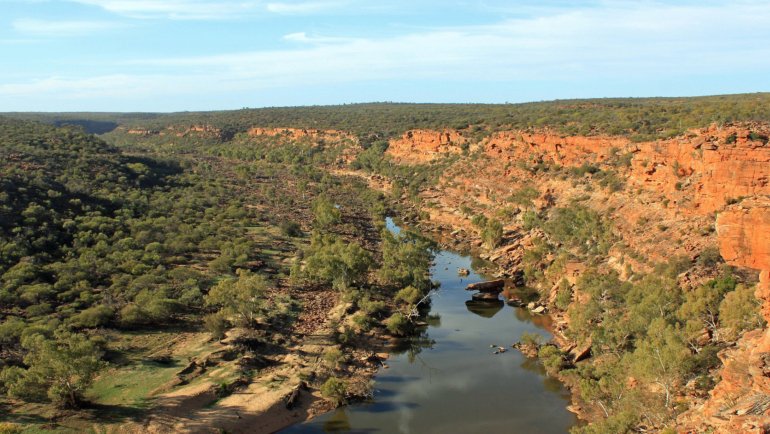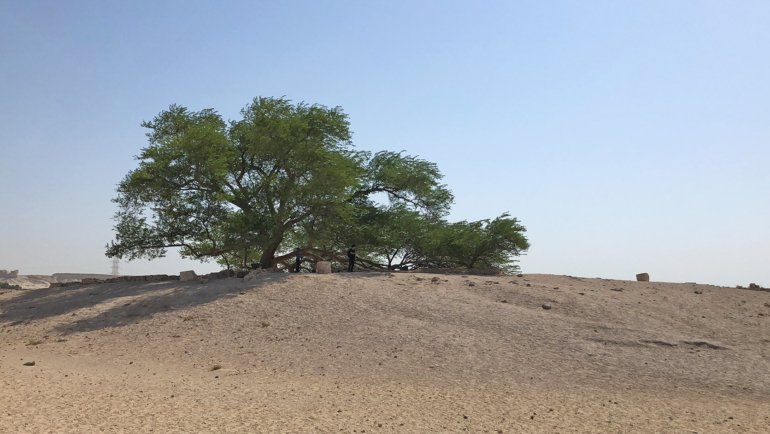Albania is a small country located in the western part of the Balkan Peninsula with Adriatic and Ionian coastlines and an interior with Albanian Alps. It shares its border with Greece to the south, Macedonia to the east, and Kosovo and Montenegro to the north.
Albania is best known for exotic beaches, medieval-era castles, and Ottoman architecture lined up on the streets. It’s also characterized by marine and terrestrial ecosystems and habitats with considerable flora and fauna species. The country is home to more than 353 species of birds, 11 of which are globally threatened. The lakes, lagoons, wetlands, and deltas are a feeding ground for thousands of migrating birds.
There are numerous species of mammals closely associated with Albania’s geographical location and climatic conditions. Approximately 58 mammal species have been recorded to occur in the country, including the Eurasian lynx, Eurasian otter, and brown bear, among others.
Below you can find a list of the top wildlife in Albania.
1. Golden Eagle
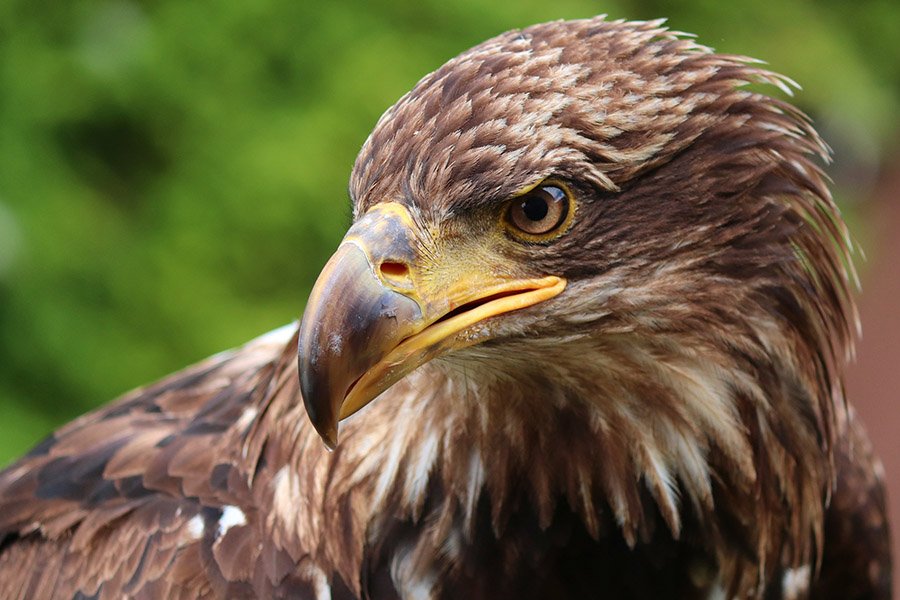
- Scientific name: Aquila chrysaetos
- Type of animal: Bird
- Where found in the country: Butrint National Park and Valbonë Valley National Park
- Conservation status: Least Concern
The golden eagle is the national animal of Albania. It’s a bird of prey most widely distributed in the Northern Hemisphere.
It lives in semi-open areas with cliffs and rocky ledges and spends most of its time soaring in search of prey. Golden eagles are the most ferocious species of eagles and can kill and eat animals twice their size.
They are very large raptors and can reach between 26 to 40 inches (66 to 102 cm) in length and weigh approximately 105 to 216 ounces. The wingspan measures about 72 to 82 inches.
2. Mediterranean Monk Seal
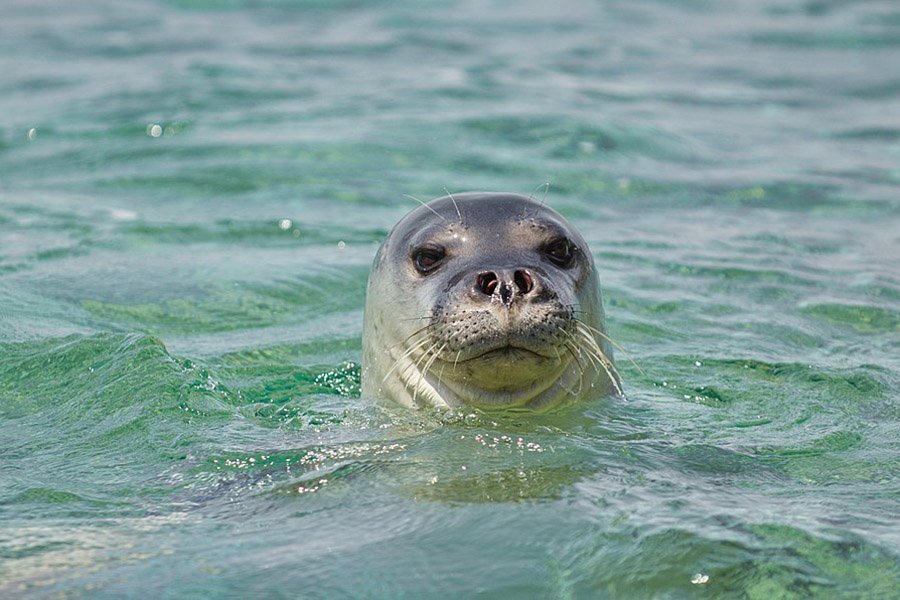 Source: Wikimedia Commons
Source: Wikimedia Commons- Scientific name: Monachus monachus
- Type of animal: Mammal
- Where found in the country: Vlora Bay
- Conservation status: Endangered
The Mediterranean monk seal is one of the world’s rarest pinniped species. It’s a large earless seal that grows from approximately 2.6 ft long at birth to an average of 7.9 ft as an adult. Males are slightly longer than females.
The Mediterranian monk seal population continues to decrease. It’s estimated that there are approximately 700 of them in the entire Mediterranean due to the loss of suitable coastlines and overhunting.
3. Eurasian Badger
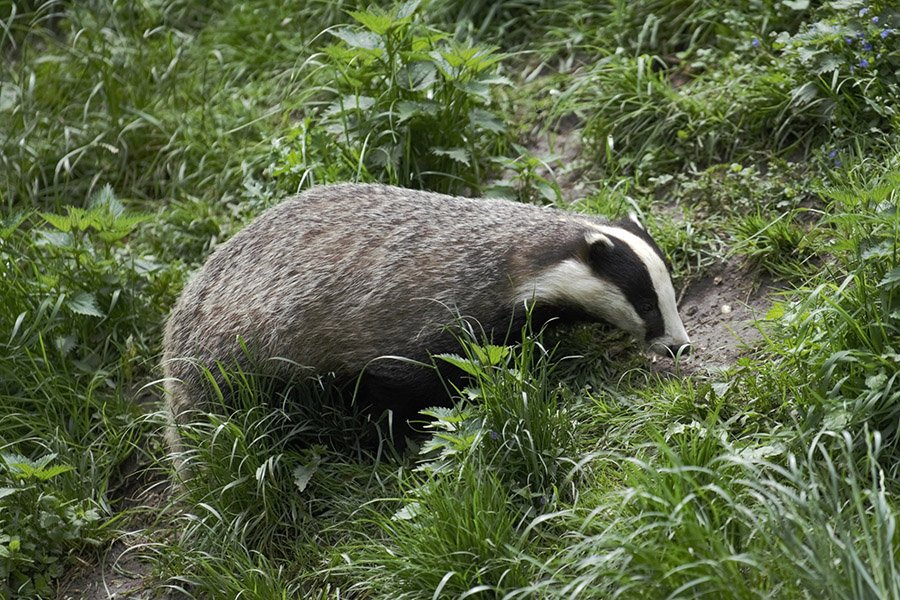
- Scientific name: Meles meles
- Type of animal: Mammal
- Where found in the country: Shebenik-Jabllanice National Park
- Conservation status: Least Concern
Also known as the European badger, the Eurasian badger is the most common type of badger in Albania and is found across much of the country’s territory. It has a wide range and stable population, which is thought to be increasing in some regions.
Eurasian badgers are closely related to weasels, minks, ferrets, otters, and wolverines. They are mainly nocturnal, and while some may be loners, most are social.
★ Did you know? Badgers build communal toilets away from where they live and sleep. Badgers are exceptionally clean animals who will not defecate in their sett but rather build shallow pits on the edge of the territory.
4. Eurasian Lynx
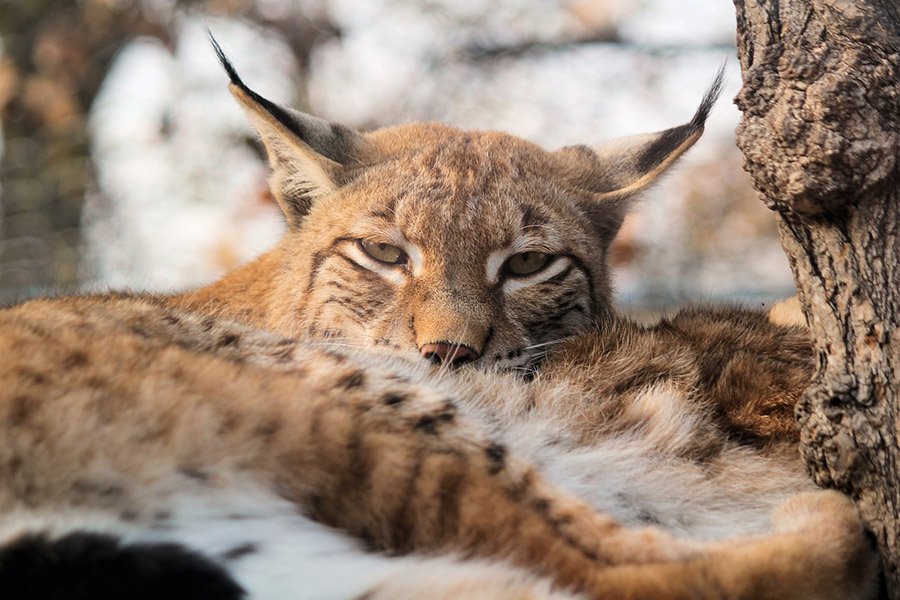
- Scientific name: Lynx lynx
- Type of animal: Mammal
- Where found in the country: Shebenik-Jabllanice National Park
- Conservation status: Least Concern
The Eurasian lynx is a medium-sized wild cat found in many parts of Siberia, Asia, and Europe. These species prefer inhabiting the rugged parts of the country with plenty of hideouts and stalking opportunities.
You may see them in montane, boreal, mixed forest-steppe, and rocky steppe ecosystems up to 5,500 m (18,000 ft). They descend to lowlands in winter to pursue prey species and avoid deep snow.
★ Did you know? Eurasian lynx can survive up to 17 years in the wild and 24 years in captivity.
5. Albanian Water Frog
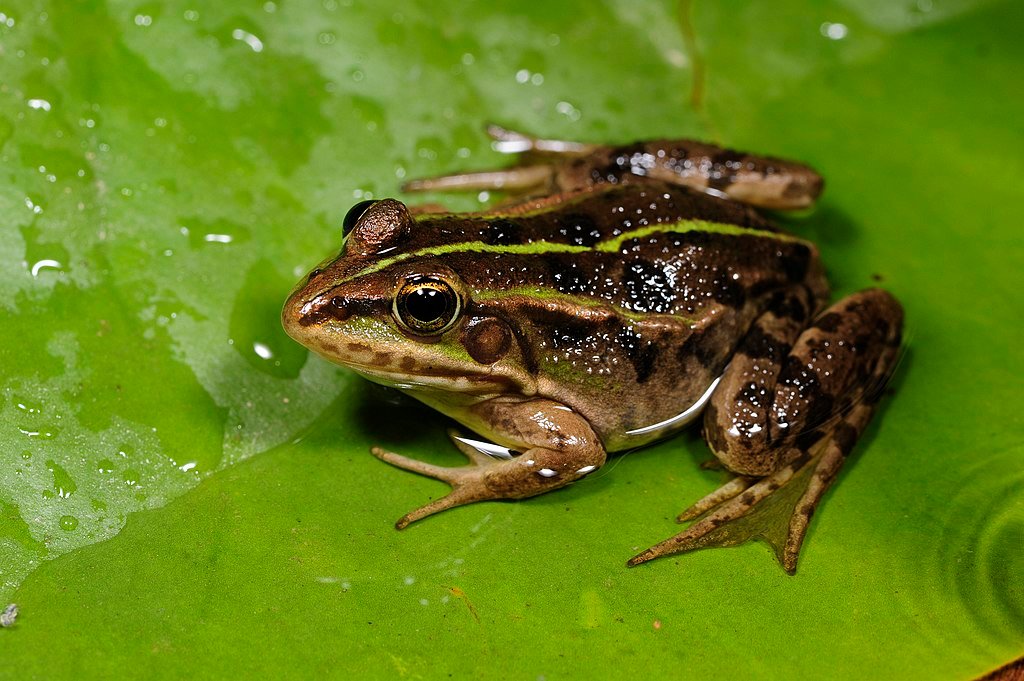 Source: Wikimedia Commons
Source: Wikimedia Commons- Scientific name: Pelophylax shqipericus
- Type of animal: Amphibian
- Where found in the country: Western Albania, particularly in swamps, marshes, and heavily vegetated shorelines of rivers and lakes
- Conservation status: Vulnerable
The Albanian water frog is a frog species from the family Ranidae. It’s endemic to western Albania and southern Montenegro. This frog prefers aquatic environments, as the name suggests. Its population is declining mainly due to pollution, habitat loss, and aggressive poaching for commercial purposes.
Female Albanin water frogs are larger than males. An adult male measures approximately 2.8 inches (71 mm) long and has a distinctive green to light brown coloration on the dorsal side with a bright green vertebral stripe. Females are approximately 2.9 inches (74 mm) long and are light brown to olive green in coloration.
6. Dalmatian Pelican
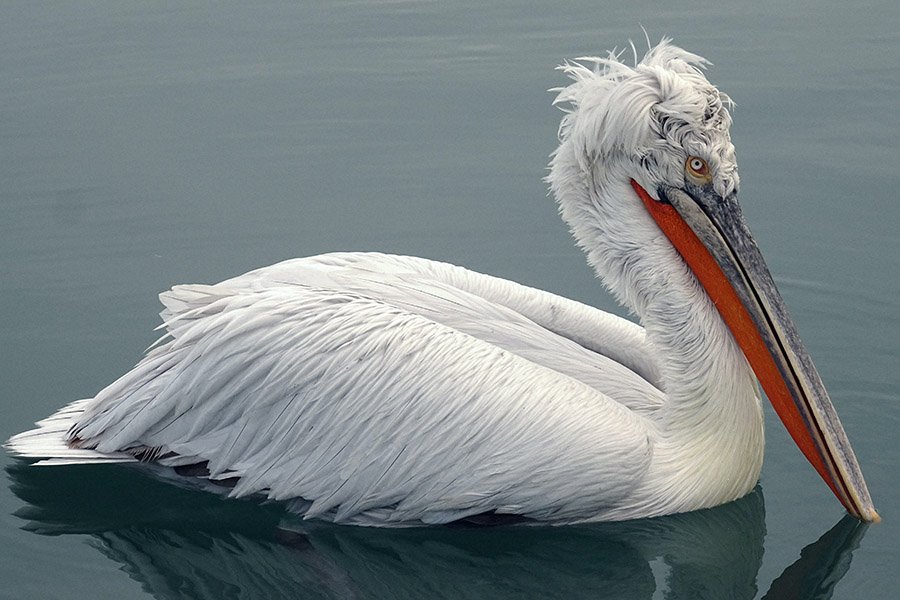
- Scientific name: Pelecanus crispus
- Type of animal: Bird
- Where found in the country: Karavasta Lagoon; it’s the symbol of Divjaka-Karavasta National Park.
- Conservation status: Near Threatened
The Dalmatian pelican is the world’s largest freshwater bird that breeds across Albania in swamps and shallow lakes. These birds are best known for the huge amount of fish they consume. They eat as much as four pounds of fish per day.
Dalmatian pelicans have been a symbol of popular culture since medieval times due to their unique stocky build and outstanding bills, which always appear in art and on coats of arms.
★ Did you know? Dalmatian pelicans can have a wingspan of up to 3 meters. They are one of the largest members of the pelican family and also the biggest living flying bird species. They weigh between 6 lbs to 33 lbs and are approximately 42 to 72in tall.
7. Dolphins
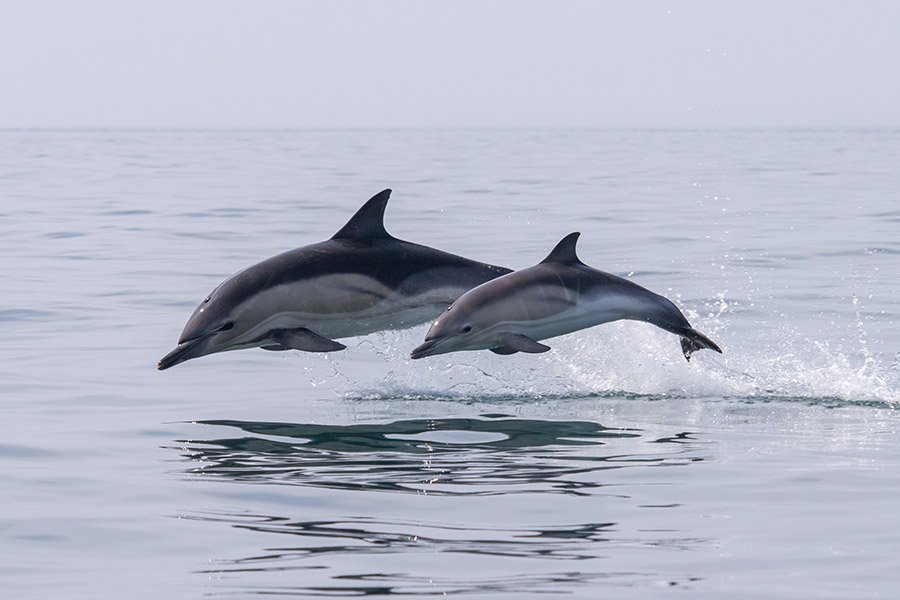
- Scientific name: family Delphinidae
- Type of animal: Mammal
- Where found in the country: In the Bay of Ftelia located in the Corfu Channel
- Conservation status: Endangered
Dolphins are among the most loved aquatic mammals within the infraorder Cetacea. These species can be found in all of the world’s oceans, and they are especially prominent on the southern Albanian coast. They offer a delightful spectacle in the Bay of Ftelia, located in the Corfu Channel.
★ Did you know? Dolphins give birth to live young rather than lay eggs. Besides, they feed their young with milk. This is one of the characteristics that classify dolphins as mammals and not fish.
8. Sperm Whale
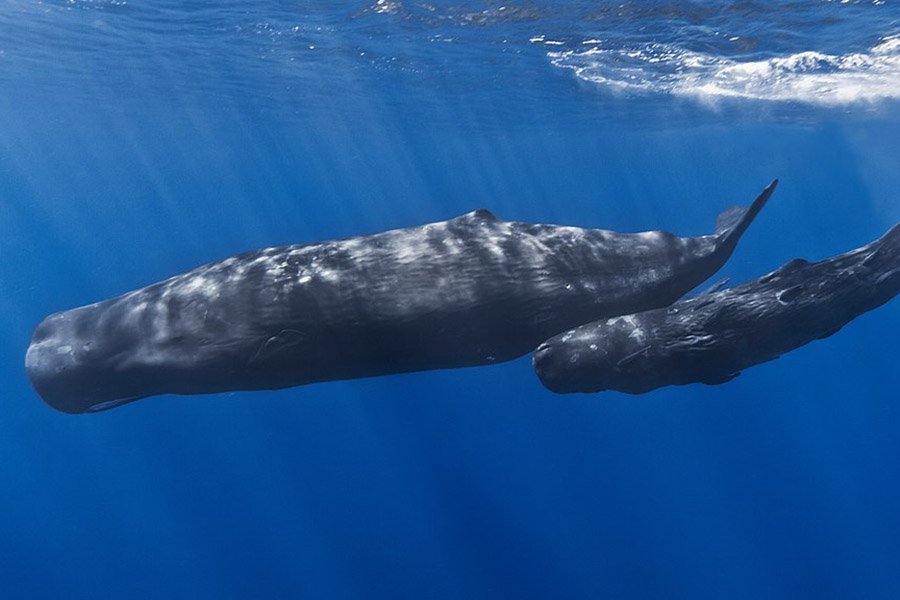 Source: Wikimedia Commons
Source: Wikimedia Commons- Scientific name: Physeter macrocephalus
- Type of animal: Mammal
- Where found in the country: Waters of Karaburun-Sazan Marine Park
- Conservation status: Vulnerable
Also known as a cachalot, the sperm whale is the largest toothed whale and one of the three extant species in the sperm whale family. It’s the only living member of the genus Physeter. Adult males live solitary lives outside the mating season, while females live together in groups.
Sperm whales dive to depths as far as 10,000 feet and can move at speeds of up to 23 miles per hour.
★ Did you know? Sperm whales can hold their breath for up to 90 minutes at a time. When hunting for food underwater, sperm whales can spend about 90 minutes, after which it comes to the surface to breathe.
9. Eurasian Otter
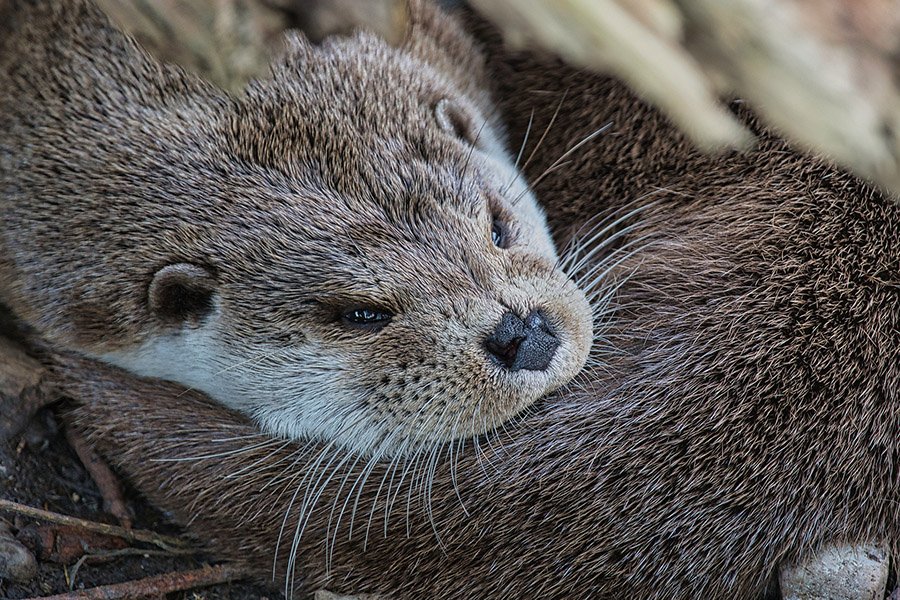
- Scientific name: Lutra lutra
- Type of animal: Mammal
- Where found in the country: Rivers and marshes in the north-west and south
- Conservation status: Near Threatened
The Eurasian otter, also best known as the European otter, old world otter, or Eurasian river otter, is a semiaquatic mammal found in the waterways and coasts of Europe. It’s endemic to Eurasia and Southeast Asia.
The Eurasian otter is strongly territorial and has a diet made up primarily of fish. It has distinct brown color on top and cream below. You can differentiate it from the North American river otter by its broader visage, shorter neck, long tail, and greater space between the ears.
★ Did you know? Eurasian otters often hold hands while eating and resting.
10. Green Sea Turtle
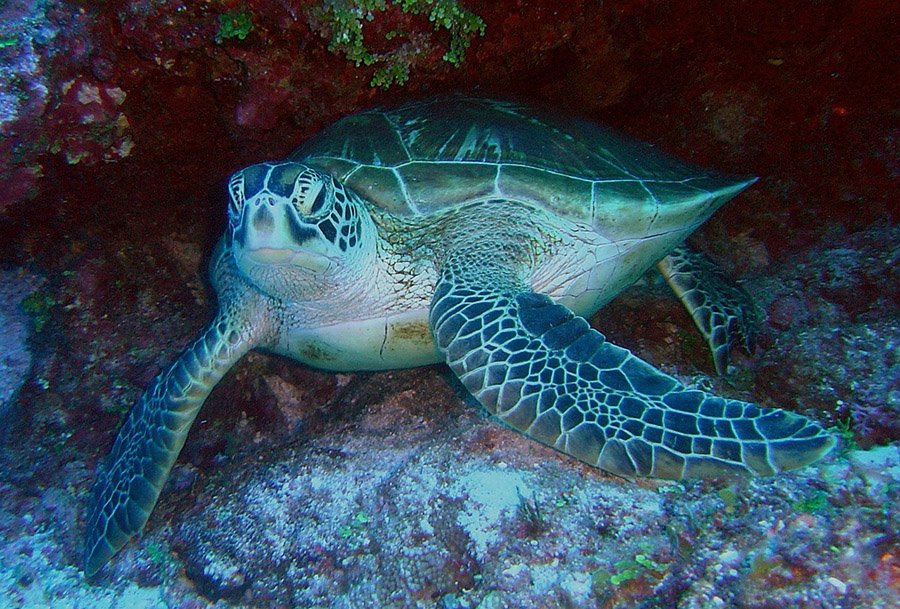
- Scientific name: Chelonia mydas
- Type of animal: Reptiles
- Where found in the country: Bay of Vlore in the south and Bay of Drin in the north of Albania
- Conservation status: Endangered
Also known as the Pacific green turtle, black sea turtle, or green turtle, the green sea turtle is the largest hard-shelled sea turtle that usually lives in tropical and subtropical seas worldwide.
As the name suggests, it has a green fat found below the carapace (remember, this is not the color of the carapace). The actual color of the carapace is olive to black.
The Green sea turtle is well-adapted to an aquatic lifestyle. It roams the world’s open oceans and knows no boundaries. The life of a sea turtle is a constant struggle for survival from the first moment it hatches. It must navigate a treacherous world of predators and survive all the formidable odds on its journey to the sea.
11. Nose-Horned Viper
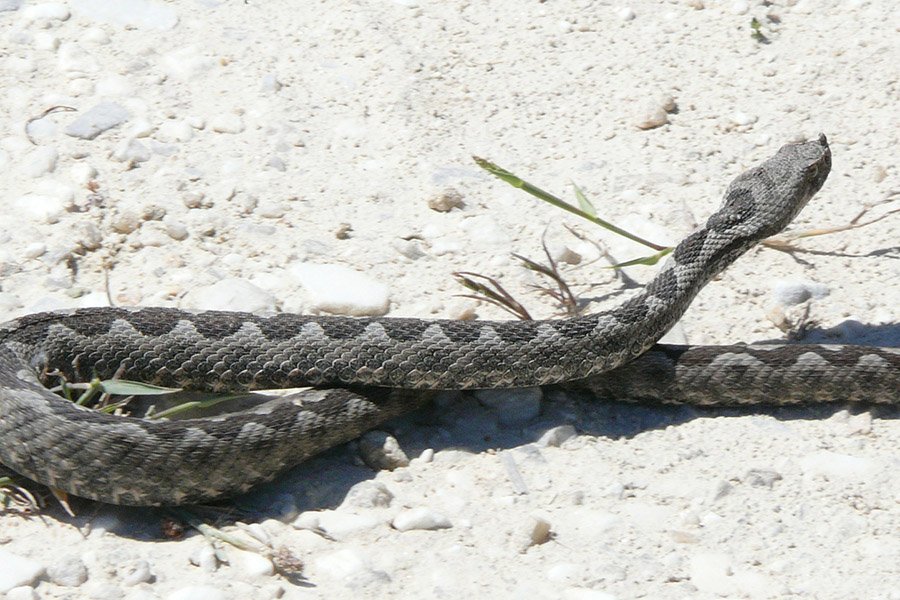 Source: Wikimedia Commons
Source: Wikimedia Commons- Scientific name: Vipera ammodytes
- Type of animal: Reptile
- Where found in the country: Valbonë Valley National Park and other rocky places in Albania
- Conservation status: Least Concern
Nose-horned viper, also known as a sand viper, long-nosed viper, and horned viper, is probably the most dangerous snake in Albania. It can be easily identified by its large size and unique horn emerging from the snout.
This snake grows to an average of 19.5 inches (50 cm), although most individuals usually measure less than 15.5 inches.
Nose-horned vipers can be found mostly in rocky hillsides with sparse vegetation. You might also see them around the edges and clearings and sometimes in vineyards with stone walls.
Their venoms can be quite toxic. Bite victims will likely experience swelling, pain, and discoloration around the injection site.
12. Brown Bear

- Scientific name: Ursus arctos
- Type of animal: Mammal
- Where found in the country: Valbonë Valley National Park, Dajti National Park, and Shebenik-Jabllanice National Park
- Conservation status: Least Concern
Albania is home to a very small population of brown bears. They are very large animals that can grow up to 5 to 8 feet tall and weigh approximately 700 pounds, though some are even larger. They are commonly found in wooded and mountainous areas.
Brown bears can be dangerous when they feel threatened or surprised in some way. They can run as fast as 30 to 40 miles per hour, about 30% faster than Usain Bolt, the fastest person in the world.
Therefore, escaping from an aggressive brown bear on foot is almost impossible. The greatest attacks happen when a human gets between a mother and cubs.
★ Did you know? Brown bears can eat up to 90 pounds of food daily before hibernation.
